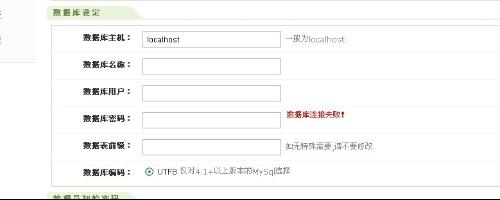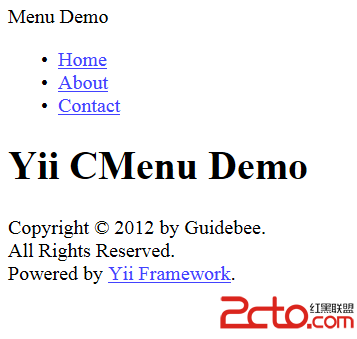php基础教程-数组操作
如果您有很大的一个数组,而所要完成的仅是找出一个存在的给定值,您可以使用in_array()以返回true或false。如下代码将输出“Not found in this array”,因为您将在$namesArray中寻找一个并不存在的“Alber”。
<?php教程
$namesArray = array("Joe", "Jane", "Bob", "Mary", "Paul", "Eddie", "John");
$lookingFor = "Albert";
if (in_array($lookingFor, $namesArray)) {
echo "You've found it!";
} else {
echo "Not found in this array!";
}
?>
如果您改变了$lookingFor的值,将其变为“Mary”,您将得到消息“You've found it!”,因为“Mary”是$namesArray的一部分。
如果希望对数组元素计数,您可以使用count()函数:
<?php
$namesArray = array("Joe", "Jane", "Bob", "Mary", "Paul", "Eddie", "John");
$count = count($namesArray);
?>
$count值将为7。
您可以对任何数组添加元素,无论是在已存在数组的开始或末尾,您也可以使用函数以创建一个包含两个或多个数组元素的新数组,合并时每个数组将按需要的顺序排列,如果您的数组已经有内部的排序,您需要对新的合并数组重排序。
让我们从对已存在数组的末尾增添元素开始,使用函数array_push():
<?php
/* 创建原始数组 */
$fruitArray = array("apple", "orange", "banana", "kiwi", "pear");
/* 加入到原始数组中 */
array_push($fruitArray, "grape", "pineapple", "tomato");
/* 通过其键值列出每个元素*/
while (list($key,$value) = each($fruitArray)) {
echo "$key : $value<br>";
}
?>
这将显示:
0 : apple
1 : orange
2 : banana
3 : kiwi
4 : pear
5 : grape
6 : pineapple
7 : tomato
当您需要对数组开头添加元素时,代码非常类似,不同处只是函数名:array_unshift()而不是array_push():
<?php
/* 创建原始数组 */
$fruitArray = array("apple", "orange", "banana", "kiwi", "pear");
/* 加入到原始数组中 */
array_unshift($fruitArray, "grape", "pineapple", "tomato");
/* 通过其键值列出每个元素*/
while (list($key,$value) = each($fruitArray)) {
echo "$key : $value<br>";
}
?>
这将显示:
0 : grape
1 : pineapple
2 : tomato
3 : apple
4 : orange
5 : banana
6 : kiwi
7 : pear
函数array_merge()合并两个或更多的数组:
<?php
/* 创建原始数组 */
$fruitArray = array("apple", "orange", "banana", "kiwi", "pear");
<? /* 创建第二个数组 */
$vegArray = array("carrot", "green beans", "asp教程aragus", "artichoke", "corn");
/* 合并为一个数组 */
$goodfoodArray = array_merge($fruitArray, $vegArray);
/* 通过其键值列出每个元素*/
while (list($key,$value) = each($goodfoodArray)) {
echo "$key : $value<br>";
}
?>
这将显示:
0 : apple
1 : orange
2 : banana
3 : kiwi
4 : pear
5 : carrot
6 : green beans
7 : asparagus
8 : artichoke
9 : corn
现在已经对数组进行了增加元素和合并,现在来练习删除元素函数,您可以使用函数array_pop()从一数组末尾删除一个元素,如果使用函数 array_shift(),则从一数组开头删除一个元素,而实际上当您从数组删除元素时,此元素对您而言仍然可用——当您从已存在的数组中对元素进行 pop或shift时。
使用array_pop()函数从数组末尾删除一个值:
<?php
/* 创建一数组*/
$fruitArray = array("apple", "orange", "banana", "kiwi", "pear");
/* 在末尾弹出某值 */
$popped = array_pop($fruitArray);
/* 列出新数组内容,以及弹出的值*/
while (list($key,$value) = each($fruitArray)) {
echo "$key : $value<br>";
}
echo "<br>and finally, in $popped: $popped";
?>
这将显示:
0 : apple
1 : orange
2 : banana
3 : kiwi
and finally, in $popped: pear
Next, delete an element from the end of an array: ???????????
下面,从数组末尾删除某值:
<?php
/* 创建一数组*/
$fruitArray = array("apple", "orange", "banana", "kiwi", "pear");
/* 从数组头部移出某值 */
$shifted = array_shift($fruitArray);
/* 列出新数组的内容以及移出的值*/
while (list($key,$value) = each($fruitArray)) {
echo "$key : $value<br>";
}
echo "<br>and finally, in $shifted: $shifted";
?>
这将显示:
0 : orange
1 : banana
2 : kiwi
3 : pear
and finally, in $shifted: apple
有很多函数可以帮助您对数组元素排序。但我将会演示基本的排序以帮助您了解其过程:
<?php
/* 创建原始数组 */
$fruitArray = array("apple", "orange", "banana", "kiwi", "pear");
/* 排序 */
sort($fruitArray);
/* 对其重设以正确从头到尾显示数组 */
/* 通过其键值列出每个元素*/
while (list($key,$value) = each($fruitArray)) {
echo "$key : $value<br>";
}
?>
这将显示:
0 : apple
1 : banana
2 : kiwi
3 : orange
4 : pear
补充:Php教程,Php入门




